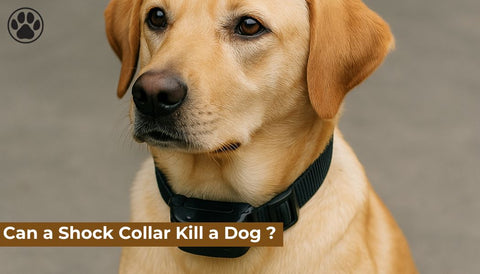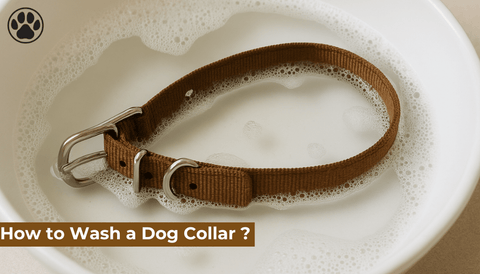
Do Male Dogs Get in Heat ?
of reading - words
Many dog owners wonder, “Do male dogs get in heat?” The concept of "heat" is commonly associated with female dogs, but male dogs experience reproductive cycles differently. Understanding the biological processes behind canine reproduction helps pet owners manage their dog's behavior and prevent unwanted pregnancies.
Do Male Dogs Experience Heat Cycles?
The short answer is no, male dogs do not go into heat. The term "heat" refers to the estrous cycle in female dogs, during which they become sexually receptive and can conceive. Unlike females, male dogs are always fertile once they reach puberty, meaning they do not experience a cyclical heat period like females.
Male Dog Sexual Maturity
1. When Do Male Dogs Reach Puberty?
Male dogs typically reach sexual maturity between 6 to 12 months of age, though larger breeds may take longer, sometimes up to 18 months. Once a male dog is sexually mature, he can mate with a female in heat at any time.
2. How Long Does Male Dog Fertility Last?
Unlike female dogs, whose heat cycles occur twice a year, male dogs remain fertile throughout their entire lives. However, their sperm quality and reproductive drive may decline with age.
Behavioral Signs of a Sexually Mature Male Dog
1. Increased Interest in Female Dogs
A sexually mature male dog will show a heightened interest in female dogs in heat. He may become restless, whine, or try to escape to find a mate.
2. Mounting Behavior
Male dogs frequently exhibit mounting or humping behavior, directed at other dogs, objects, or even people. This behavior is driven by hormones but can also be a sign of dominance or excitement.
3. Marking Territory
Sexually active males tend to urinate more frequently, especially in unfamiliar areas, as a way to mark their territory and attract females.
4. Restlessness and Anxiety
When a male dog senses a female in heat nearby, he may become agitated, refuse food, bark excessively, or attempt to escape. This behavior is a direct response to the pheromones released by a female dog in heat.
Can a Male Dog Control Its Reproductive Urges?
Male dogs experience a strong instinctual drive to mate when they detect a female in heat. While training and behavioral management can help curb excessive behaviors, neutering is the most effective way to reduce mating urges and associated behaviors.
How to Manage a Male Dog Around a Female in Heat
1. Keep Distance from Females in Heat
If your male dog is unneutered and a nearby female is in heat, keep them separated. Even well-trained males can be driven by their instincts to seek out a mate.
2. Provide Mental and Physical Stimulation
Regular exercise, training, and interactive toys can help distract a male dog from his reproductive urges and reduce frustration.
3. Consider Neutering
Neutering a male dog eliminates his ability to reproduce and significantly reduces mating behaviors, marking, and aggression associated with high testosterone levels.
Common Myths About Male Dogs and Heat
1. Myth: Male Dogs Have Heat Cycles Like Females
Fact: Male dogs do not experience heat cycles but are fertile year-round.
2. Myth: Neutering Immediately Stops All Sexual Behavior
Fact: While neutering reduces sexual behaviors, some behaviors may persist due to habit or learned responses.
3. Myth: Only Female Dogs Exhibit Mounting Behavior
Fact: Male and female dogs can both engage in mounting behavior for various reasons, including excitement, play, and dominance.
Frequently Asked Questions (FAQ)
1. Can a male dog sense a female in heat from far away?
Yes, male dogs can detect a female in heat from miles away due to their strong sense of smell and sensitivity to pheromones.
2. Will my male dog’s behavior change permanently if exposed to a female in heat?
A male dog's behavior may temporarily change, becoming more restless and agitated. However, once the female is out of heat, behavior usually returns to normal.
3. Can I stop my male dog from marking inside the house?
Neutering can significantly reduce marking behavior, but consistent training and supervision are necessary to correct it.
4. What happens if a male dog does not mate?
Male dogs do not suffer health issues if they do not mate. However, unneutered dogs may display frustration behaviors, which can be managed through exercise and training.
5. At what age should I neuter my male dog?
Most veterinarians recommend neutering between 6 to 12 months of age, though it can be done later depending on the dog's health and breed.
Conclusion
While male dogs do not go into heat, they are fertile year-round and exhibit strong mating behaviors when exposed to a female in heat. Understanding male dog reproductive behavior helps pet owners manage their dogs effectively, whether through training, exercise, or neutering. Proper care ensures a well-balanced and well-behaved pet, minimizing frustration and unwanted behaviors.




